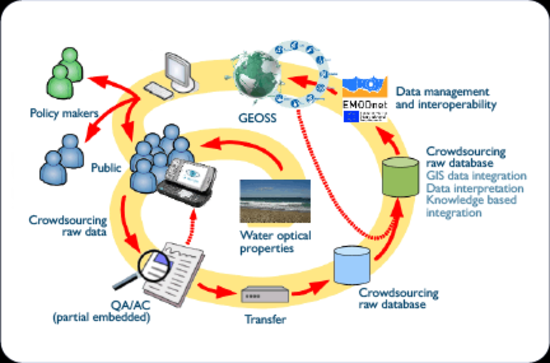Citclops project overview
Aquatic ecosystems are characterized by an extraordinary mix of human activities, e.g.: tourism, fishing and industry (petrochemical plants and aquaculture, etc.). Given the frequently conflicting interests between conservation and exploitation, the fate of aquatic ecosystems is often a hot political issue. The attitudes and values of stakeholders in environmental issues are an essential part of the stewardship of conflicting environments. New policies concerning environmental resources should have citizens’ support and consider public attitudes from the beginning.
When managing complex ecosystems, the approach of seeking public support can present serious difficulties. It is unrealistic to expect everybody to understand the whole tangle of potential ecological problems, and therefore it is important to ask how much of an educational effort is necessary.
In general, public attitudes show a strong preference for protecting aquatic ecosystems as well as returning already-damaged ecosystems to their original, natural status for a variety of reasons. Given the state of affairs that exists in aquatic ecosystems, the word “natural” is open to a variety of interpretations. Usually, scientists narrowly define “natural status” to mean “unaltered by human beings”. Citizens usually define it to mean “natural appearing”. A great many people who value natural resources value them as something to look at. It will take generations of environmental education to create a general public understanding of the fact that the importance of nature and its processes goes far beyond scenery (e.g. not all colour-changes represent a risk).
Part of this education and understanding can be realized through citizens’ effective participation in environmental stewardship. This is especially true in the monitoring of coastal and ocean waters, which need extensive data measurements due to their highly complex dynamics with high variability in space and time.

Photo courtesy of Dr. Marcel Wernand from the Royal Netherlands Institute for Sea Research
The Citclops project aims to develop systems to retrieve and use data on seawater colour, transparency and fluorescence, using low-cost sensors combined with people acting as data carriers, contextual information (e.g. georeferencing) and a community-based Internet platform, taking into account existing experiences (e.g. Secchi Dip-In, Coastwatch Europe and Oil Reporter).
Methods are being developed to rapidly capture the optical properties of seawater, e.g.: colour through Forel-Ule observations, and transparency through a variant of the Secchi disc. People will be able to acquire data taking photographs of the sea surface on ferries or other vessels, on the open sea or from the beach.
Objectives
- To enable citizens’ participation in acquiring environmental data in coastal and oceanic areas through the use of existing devices, such as smart phones as sensors.
- To develop improved low-cost sensors and systems for monitoring water colour, transparency and fluorescence, in a location-aware manner allowing for the analysis of spatial patterns.
- To provide recommendations in sectors such as energy, transport, fisheries, health and spatial planning, interpreting collected data through artificial intelligence techniques.
- To disseminate interpreted information to two kinds of users: citizens (individuals and associations) and policy makers (e.g. local administrations).
- To produce applied results by developing: (1) new applications for mobile devices; (2) friendlier and more flexible user interfaces; and (3) social-networking capabilities to connect citizens and their associations to policy makers.

